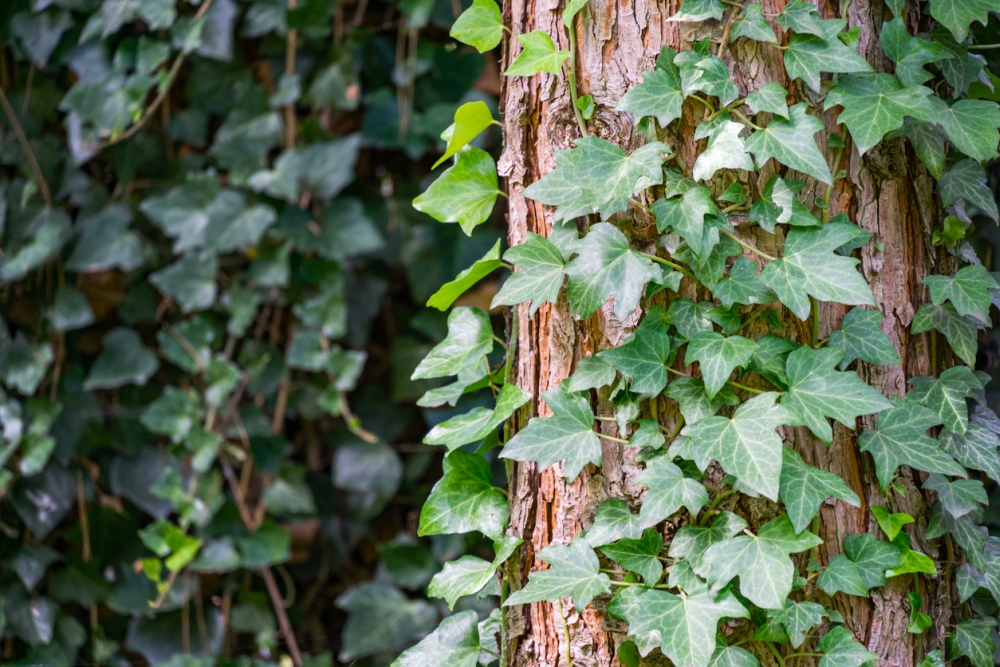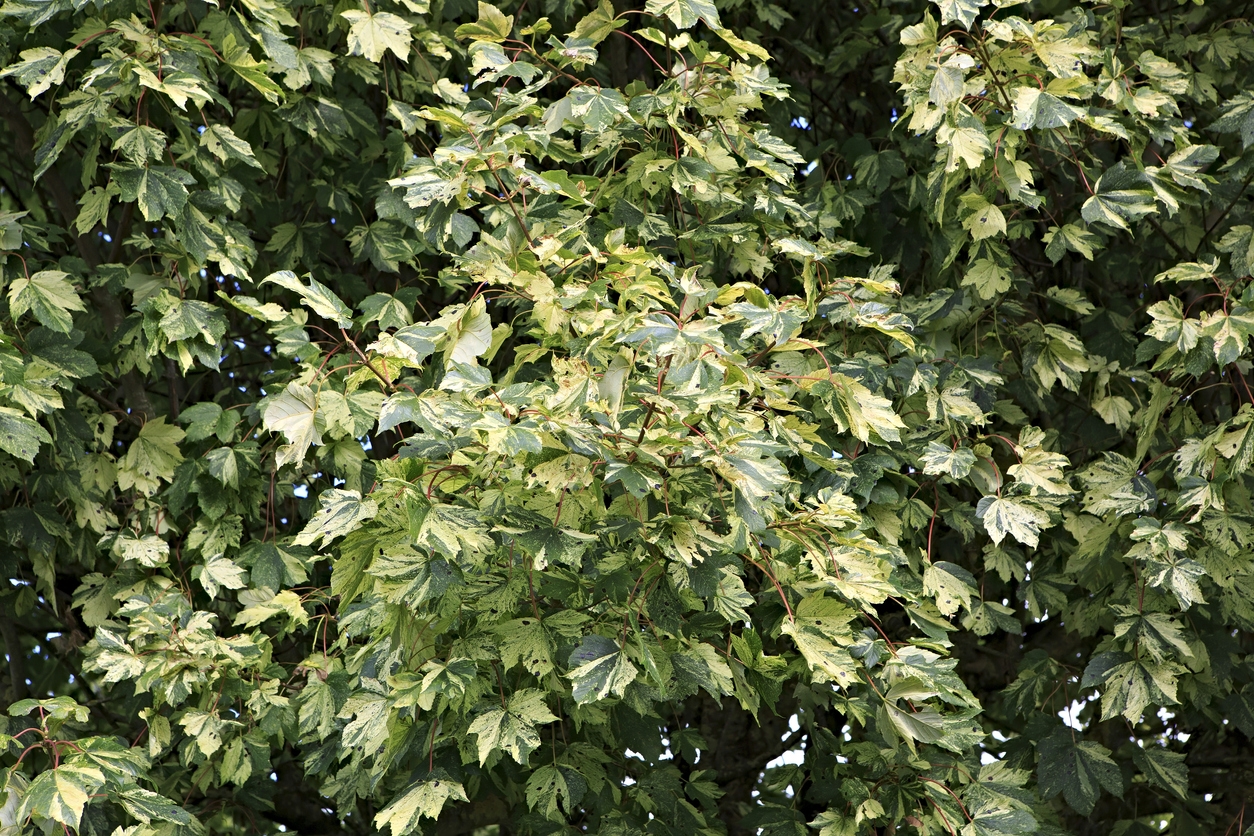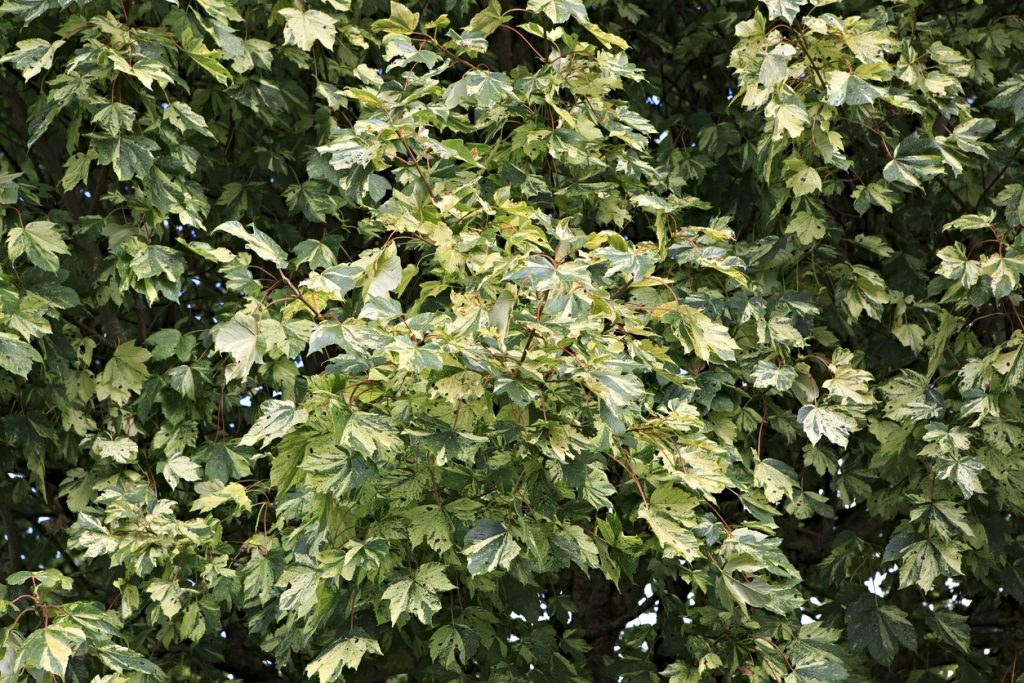Tree Ivy Houseplant – How To Grow And Care For Tree Ivy
As far as unique houseplants are concerned, tree ivy is quite exceptional. For one thing, it’s not a real species but a crossbreed between two ivies. And despite being highly toxic, it has such ornamental values that merit a place in your living room. If there’s one thing that can sum up the whole tree ivy as a houseplant experience, it’s that it makes the house feel more grounded.
Maybe it’s the variegated leaves or the dense foliage. Or maybe it’s just that looking at the plant makes you feel calmer and more at peace with yourself and the world. Whatever the reason, tree ivy has found a place inside many living rooms. You’ll find it peeking at you from a corner or taking up center stage above a contemporary coffee table.
Tree Ivy at a Glance
Not only is tree ivy (x Fatshedera lizei) a hybrid, it’s a hybrid between two plants from different genera. That explains the X in front of the name. Its parents are English ivy and Japanese fatsia. And while the new hybrid retained the toxicity of the ivy, it acquired brightly variegated leaves along the way.
First cultivated in 1912 in France, tree ivy became an overnight sensation among gardeners and horticulturalists everywhere. The idea was to turn ivy into a bushy plant while maintaining the five-lobed leaves. As a result, the new plant can grow to about 4 feet tall before you need to find support for the weak branches.
Another option is to grow it as a vine and allow it to reach up to 12 feet tall if you’re so inclined. However, you’ll need to train the branches to climb up the trellis or support them since they’ve lost the natural ability to climb during the crossbreeding process.
The variegated leaves are about 10 inches long and 8 inches wide. In the fall, the plant starts to flower. Each flower is about 2 inches in diameter and can be either white or yellow. These flowers don’t carry seeds nor do they produce fruits. There were reports of some tree ivy hybrids producing berries, but these were isolated cases. If you grow a tree ivy in your house, chances are, it will be sterile.
Ivy Varieties
Ivy comes in different species and varieties. Almost every country in the Northern Hemisphere has its own ivy variety. Naturally, they’re for the most part toxic, so choosing one variety over the other comes down to personal taste and the aesthetic values of the ivy itself. Here are some good ivy candidates to consider as houseplants.
- English Ivy (Hedera helix): One of the parents of tree ivy, this common ivy is prevalent all over North American and Europe. The mature vine can grow up to 100 feet high and has great air filtering capabilities. The lobed leaves are glossy and dark green. You can grow it on a trellis, a raised bed, or a hanging basket. Notable cultivars include needlepoint, ivalace, goldchild, tripod, and Caroline crinkle.
- Persian Ivy (Hedera colchica): The leaves of this species are shaped like a heart and can be variegated or have solid green colors. It grows to 40 feet high and is more suited for zones 6 to 9. They have a high tolerance to drought and heat and are notorious for their fast growth rate. Regular pruning is the key to keeping the plant under control.
- Irish Ivy (Hedera hibernica): A giant vine that grows to 100 feet high and has a high tolerance to temperate and hot weather. You can grow it successfully in zones 4 all the way to 11. The glossy green leaves are its most prominent feature although it produces flowers and berries as well. The flowers are yellow and tiny and bloom around September and October of every year.
- Japanese Ivy (Hedera rhombea): By ivy standards, this species is a shorty, as it only grows to 30 feet high. It grows in the wild in the Asian planes and you can find it climbing up the trunks of trees. The variegated leaves grow on purple stems which creates a breathtaking explosion of colors. And when the clusters of yellow flowers bloom, you’ll have something to admire throughout the fall. The plant produces dark blue berries.
- Russian Ivy (Hedera pastuchovii): Another ivy species with heart-shaped leaves. It grows to about 100 feet tall and is best suited for zones 7 to 11. You can grow it as an evergreen perennial beside a trellis since it doesn’t do well as a ground cover. One of its hybrids, Ana ala, is an award-winning cultivar that has gained popularity.
How to Grow Tree Ivy
Since tree ivy is a sterile hybrid, it doesn’t produce seeds. So the best way to start is either by getting a cutting from a mature plant or purchasing a small plant from the local nursery. Here, we’ll focus on how to start the ivy from a cutting.
- The best time to start a tree ivy cutting is in the spring or early summer. Although you can plant them any time of the year, they establish faster in the spring.
- Select a few healthy stems on a mature plant that are neither soft nor woody.
- Cut 5 inches of the stem just below a leaf node using a sterilized blade.
- Fill a small pot with a rooting medium such as vermiculite or perlite.
- Water the medium enough to get it moist but not wet and poke a few holes for the cuttings.
- Dip the cuttings in rooting hormone, shake off the excess powder, then plant them in the holes. Pack the soil around the cutting to make it firm.
- Cover the pot with a plastic bag to maintain the moisture levels around the ivy.
- Place the pot in a well-lit spot that doesn’t get direct sunlight.
- Keep the rooting medium moist at all times while the cuttings develop roots.
- After about 4 to 8 weeks, you’ll see new leaves emerging on the cuttings.
- Transplant each sapling to its own pot.
Tree Ivy Care
While tree ivy is easy to grow and doesn’t require anything more than time and steady moisture, caring for the plant is a little more complicated. While the ivy bush is well under 3 feet high, it won’t give you trouble. However, as the branches grow high, the weight of the leaves makes them bend over. Here you’ll need to provide support for the shaky vines and treat it as another creeper. If you want to keep it bushy and compact, then regular pruning is your best course of action.
Soil
The more breathable the soil the better. Regular garden soil will not work as the root system of the tree ivy finds it hard to penetrate dense soil. So mix perlite and peat with regular soil at a 1:1:1 ratio to create a well-drained and aerated medium for the ivy. Make sure the soil pH doesn’t become too acidic with all the peat and perlite you add. It should be between 6.00 to 7.5 which means it’s neutral or slightly acidic. If the soil is too acidic, you can add more loamy soil or use a general-purpose potting mix instead.
Light and Humidity
As a houseplant, you need to take extra caution with the light requirements of the tree ivy. It thrives in well-lit rooms but it doesn’t do well when exposed to direct sunlight. So you won’t have to place it on a window sill. If the room gets flooded with sun, make sure to draw a lace curtain across the window.
As for humidity, this ivy loves plenty of it. On a daily basis, you’ll need to mist the plant at least once. Another option is to place the pot in a tray full of water and pebbles. Dry conditions, especially as a result of using dehumidifiers or air conditioners, lead to drooping leaves and wilting branches.
Water
Tree ivy is a thirsty plant that needs the soil to be moist. Since it grows in a pot, chances are the soil will go dry fast. So you need to water it between 2 to 3 times a week during the growing season in the spring and summer. Don’t get the soil overly wet or soaked since that can have an adverse effect on the roots of the ivy. Keep the watering shallow and stop when the top three inches get moist. Once the flowers have faded in the fall, cut back your watering to once every week.
Fertilizer
As a perennial, tree ivy needs regular feeding as well. It doesn’t matter how rich the soil you planted it in, the ivy needs plenty of nutrients to keep up with its fast growth rates. You can use a balanced 10-10-10 liquid fertilizer from early spring all the way until the end of summer. Apply the liquid fertilizer once every 2 weeks before you water the plant. If the plant is growing too fast for your liking, you can use a low-nitrogen fertilizer.
Pruning
The difference between an ivy bush and a trailing ivy vine comes down to pruning. You can treat your tree ivy as a bonsai and give pruning as much time and attention as you can. In its compact form, the tree ivy maintains a bush structure and the branches grow erect. But once the foliage takes full shape, the weight of the leaves causes the weak branches to bend down. To prevent that, you’ll need to keep your pruning shears handy and trim wayward branches. Tangled branches can also complicate this problem, so trim away to keep the bush light and in good shape.
Pests and Diseases
Besides aphids, spider mites, and mealybugs, tree ivy doesn’t attract serious pests. You can use neem oil or rubbing alcohol to get rid of these bugs safely. However, if you notice that the leaves are getting smaller and the twigs getting leggy, your plant could be exposed to too much light or getting sunlight. Move it away from the window and draw a curtain to filter the light coming through.
Light deprivation and overwatering, on the other hand, could cause botrytis, so providing the right amounts of light and water is really a balancing act.
Tree Ivy Toxicity
Tree ivy is toxic much like its English ivy parent. Both pets and humans are prone to ivy poisoning. Symptoms include drooling and vomiting for animals, and nauseous, stomach ache, and diarrhea among people. Keep the tree ivy away from the reach of children and pets in your house. When pruning or watering the ivy, you should wear protective gloves. If the ivy leaves come in contact with bare skin they could cause a rash. You should seek immediate medical assistance in case of tree ivy poisoning.


